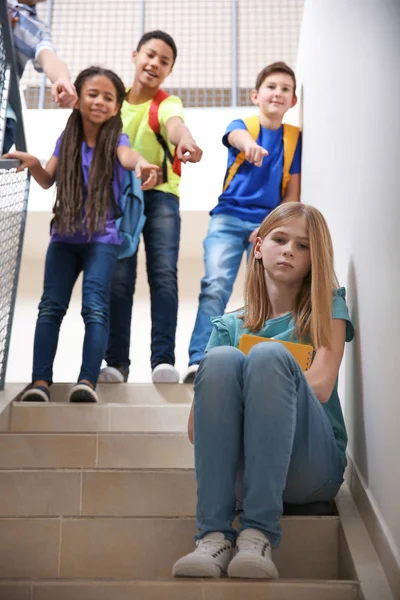
5 Main Types of Bullying in Elementary and High Schools?
The five main types of bullying in elementary and high schools are physical bullying, verbal bullying, relational or social bullying, cyberbullying, and sexual bullying. These categories encompass the most common forms of aggressive behavior that students experience across all grade levels, from kindergarten through twelfth grade. Understanding these distinct types helps educators, parents, and students recognize warning signs and implement appropriate intervention strategies to create safer learning environments.
1. Physical Bullying: Direct Aggression and Violence
Physical bullying represents the most visible and easily recognizable form of school harassment. This type involves direct physical contact intended to hurt, intimidate, or control another student. Common manifestations include hitting, kicking, punching, shoving, tripping, and spitting. Physical bullying also encompasses damage to personal property, such as destroying homework, breaking belongings, or vandalizing lockers.
In elementary schools, physical bullying often appears as playground altercations, pushing in hallways, or taking and hiding personal items. The behavior may seem like rough play but becomes bullying when it involves repeated targeting of the same victim and an imbalance of power. Elementary-aged children may not fully understand the impact of their actions, making early intervention crucial.
High school physical bullying tends to be more sophisticated and potentially dangerous. Older students may use weapons, engage in more serious physical altercations, or participate in hazing activities. The consequences become more severe as students mature, potentially leading to serious injuries and legal ramifications.
Physical bullying affects both boys and girls, though research indicates that boys are more likely to engage in and experience direct physical aggression. The immediate effects include visible injuries, but the psychological trauma can persist long after physical wounds heal.
2. Verbal Bullying: Psychological Warfare Through Words
Verbal bullying involves using words to hurt, humiliate, or intimidate victims. This form includes name-calling, insults, threats, discriminatory remarks, and cruel teasing. Unlike physical bullying, verbal aggression leaves no visible marks but can cause profound psychological damage that affects self-esteem, academic performance, and social development.
Elementary students often engage in verbal bullying through cruel nicknames, making fun of appearance, academic abilities, or family circumstances. Young children may not fully comprehend the lasting impact of their words, making it essential for adults to address this behavior immediately and teach empathy.
In high schools, verbal bullying becomes more sophisticated and targeted. Teenagers may use sarcasm, social media comments, or public humiliation to attack peers. The adolescent brain’s developing capacity for abstract thinking allows for more complex forms of psychological manipulation through verbal attacks.
Verbal bullying frequently targets students based on their perceived differences, including physical appearance, academic performance, socioeconomic status, or cultural background. The repetitive nature of verbal attacks can severely impact a student’s mental health and academic achievement.
3. Relational or Social Bullying: Manipulation of Peer Relationships
Relational bullying, also known as social bullying, involves manipulating social relationships to harm victims. This sophisticated form of aggression includes deliberate exclusion, spreading rumors, public embarrassment, and damaging reputations. Social bullying aims to isolate victims from their peer groups and destroy their social standing.
Elementary school social bullying often manifests as excluding classmates from games, birthday parties, or group activities. Children may form cliques that deliberately leave others out or spread gossip about targeted peers. While seemingly less harmful than physical violence, social exclusion can be devastating for young children who are learning to navigate friendships.
High school relational bullying becomes more complex and potentially more damaging. Teenagers may use sophisticated social manipulation, including turning friend groups against individuals, spreading false information, or orchestrating public humiliation. The importance of peer acceptance during adolescence makes social bullying particularly effective and harmful.
Research indicates that girls are more likely to engage in relational bullying, though boys also participate in these behaviors. The subtle nature of social bullying makes it difficult for adults to detect and address, often allowing it to continue unchecked.
4. Cyberbullying: Digital Age Harassment
Cyberbullying represents the modern evolution of traditional bullying behaviors into digital spaces. This form involves using technology platforms, including social media, text messages, email, and gaming platforms, to harass, intimidate, or humiliate victims. Cyberbullying can occur 24/7, extending harassment beyond school hours and into students’ homes.
Elementary students increasingly have access to devices and social media, making cyberbullying a growing concern for younger children. Common behaviors include sending mean messages, sharing embarrassing photos, or excluding peers from online groups. The permanent nature of digital communication means that harmful content can resurface repeatedly.
High school cyberbullying often involves more sophisticated tactics, including creating fake profiles, sharing intimate images without consent, or organizing online harassment campaigns. The anonymity provided by digital platforms can embolden perpetrators and make it difficult to identify aggressors.
The unique characteristics of cyberbullying include its potential for viral spread, anonymity of perpetrators, and the difficulty victims face in escaping harassment. Unlike traditional bullying, cyberbullying can reach unlimited audiences and create permanent records of humiliation.
5. Sexual Bullying: Harassment Based on Gender and Sexuality
Sexual bullying involves unwanted sexual attention, comments, or behaviors that create hostile environments for victims. This form includes inappropriate touching, sexual name-calling, spreading sexual rumors, and harassment based on sexual orientation or gender identity. Sexual bullying can occur independently or in combination with other forms of harassment.
In elementary schools, sexual bullying may appear as inappropriate comments about body parts, unwanted touching, or early forms of sexual harassment. Young children may not understand the sexual nature of their behavior, making education and immediate intervention essential.
High school sexual bullying becomes more serious and potentially criminal. Behaviors may include sexual assault, sharing intimate images without consent, or creating hostile environments based on gender or sexual orientation. The intersection of sexual harassment with other forms of bullying creates particularly harmful situations for victims.
Sexual bullying disproportionately affects girls and LGBTQ+ students, though all students can be targets. The shame and stigma associated with sexual harassment often prevents victims from reporting incidents, allowing behaviors to continue unchecked.
Addressing the Five Types of Bullying
Understanding these five main types of bullying enables schools to develop comprehensive prevention and intervention strategies. Effective approaches must address the unique characteristics of each type while recognizing that many incidents involve multiple forms of harassment simultaneously.
Creating safer school environments requires ongoing education, clear policies, consistent enforcement, and support systems that address the complex nature of modern bullying behaviors across all educational levels.
